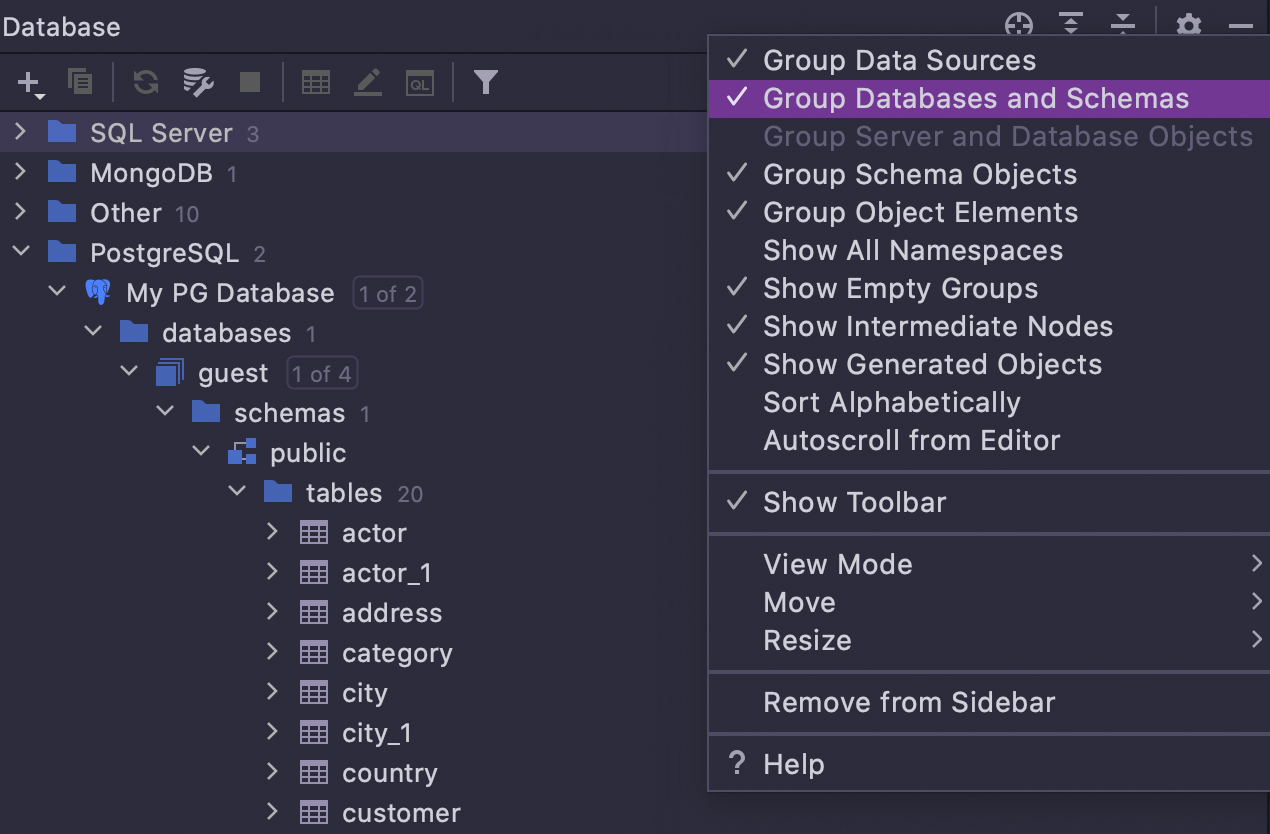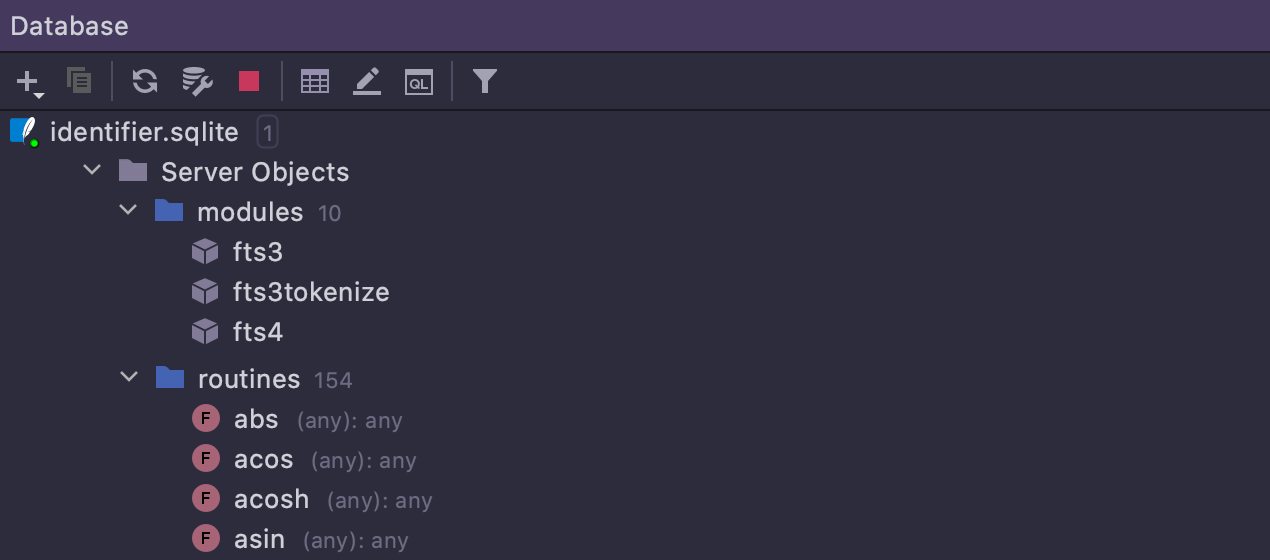
What’s most important, if you know something is possible in DataGrip but you don’t know how access it, just type it here. By the way, it also searches in settings, so ‘ R esult page size‘ setting can be found here as well. Earlier in this post we described the way to set the page size follow the same steps to locate this setting.įind action (Ctrl+Shift+A) will lend a helping hand when the going gets tough. To navigate to a file with the specified name press Ctrl+Shift+N ( Shift+Cmd+O for OSX). In our example, the actor table is found in dump-files, database consoles with different queries and several objects: one rule and three views. But if you choose ‘All scopes,’ it will also look inside source codes and thus locate the procedure in our database.įind usages in the context menu of the object (or press Alt+F7) will show you where it is used, be it scripts or source codes of other projects.
#DATAGRIP NOT SHOWING TABLES CODE#
In our example, if you select ‘In Project‘, it only looks for code in dump files attached to the project. Notice the settings icon, which lets you exclude comments and literals, or conversely search only within comments and literals.įind in path (Ctrl/Cmd+Shift+А) looks for code in other consoles, attached files and even in the source code of views and routines. Set multicursors on the search results: Ctrl+Alt+Shift+J (Ctrl+Cmd+G for OSX). Press Ctrl+Space to complete the value, based on the words you have in the current context. What many people don’t know (including some at JetBrains!) is that completion works here as well. As usual, in DataGrip it is available via Ctrl/Cmd+ F.

This field can be automatically populated from the context menu.įind is of course a must-have feature for any editor. When working with a table, enter a filtering condition written in SQL in the corresponding field, as if you were writing it a WHERE clause. But remember, that it can affect the performance of the queries. To configure the page size of the result set, go to Settings → Database → Data views → Result page size. Note that this searches only within the current page of the result-set. You can see only rows with matches if you prefer. It’s especially helpful if you don’t know which exact column contains the data you’re looking for. To quickly find data inside a table, without writing a statement, call up text search with Ctrl/Cmd+ F. Press Enter to navigate to the particular column. Open Structure view by Ctrl+F12 and start typing! Speed search saves you again and filter columns. It will work whichever option you choose in the previously described setting.Īnd a small tip for searching for the columns in any result-set or table. If you want to see the object in the database tree turn on Auto-Scroll from editor. Select the table the database explorer: Alt/Opt+Shift+B. Table’s data: F4 ( Enter does the same for tables). For functions or procedures, Enter will open the source code.Īll navigation actions now work from here.įor instance, if you’re searching for a table, see what you can open from right here: If you are looking for a table or view, Enter will open the data editor (with a DDL tab in case you need the code). Ctrl+Alt+Shift+N ( Alt+Cmd+O for OSX) includes more objects in the search scope like column, indexes etc. Just type the name or an abbreviation of the object you need. Navigate to any database object with Ctrl+N ( Cmd+O for OS X) such as a table, view, procedure, etc. For instance, ‘ fa‘ is enough to find ‘ film_actor‘. Simply start typing! Note though that a matching database object will only be highlighted if its node is already open.Īnother nifty thing about speed search is that it supports abbreviations.

Database objectsįirst, any tree (list, pop-up, drop-down) in IntelliJ-based IDEs supports speed search. Let’s look closer at how not to get lost in the IDE and your databases. Lots of other things: files, settings, IDE actions, etc.įinding what you need easily is crucial to user experience, which is why we focus heavily on making search and navigation intuitive in DataGrip. Code: for example a piece of code in a big script or the source code for a database object. Database objects: tables, views, procedures, columns and so on. In DataGrip, you could be looking for things like:

#DATAGRIP NOT SHOWING TABLES SOFTWARE#
When you work with a software tool, you often need to find something or other.


 0 kommentar(er)
0 kommentar(er)
